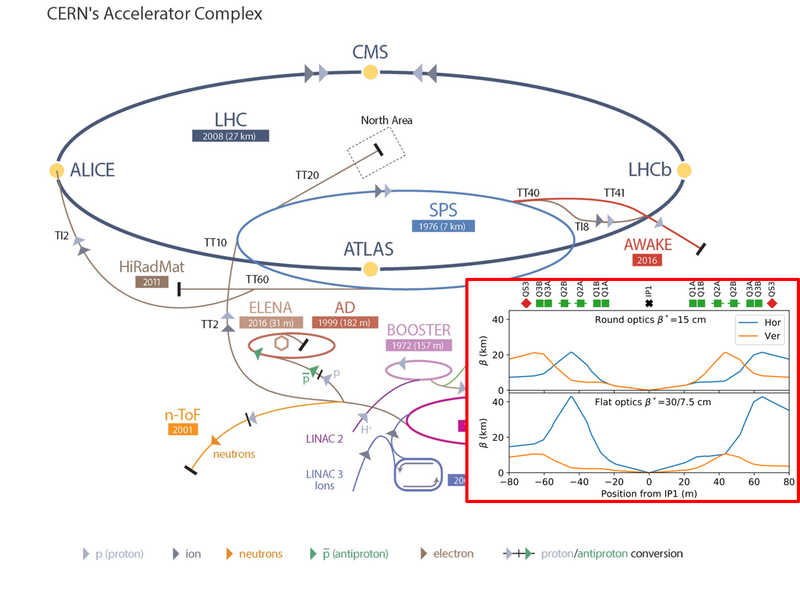Jaime Coello has defended his thesis on local optics corrections in the Large Hadron Collider
Jun 16, 2021
Jaime Coello de Portugal-Martínez Vázquez defended his PhD thesis on accelerator physics co-directed by Rogelio Tomás (CERN) and Youri Koubychine Physics Department & INTE, UPC) at the ETSEIB on June 16, 2021.
His thesis entitled “Local Optics Corrections in the HL-LHC“ contributes to the ongoing research on further improvement of the performance of existing and future particle colliders. The current and planned high energy particle experiments require smaller and smaller beam sizes at the interaction region that, according to the beam dynamics laws, implies that the accelerator must accommodate larger beam sizes in the surrounding regions. This in turn leads to a stronger influence of magnetic errors in bending and focusing magnets that must be suppressed. The thesis presents a study on the consequences of these magnetic errors and several mitigation techniques to correct their influence.
One of important contributions of the thesis is a development of a new algorithm to perform Monte-Carlo simulations of the magnetic errors and their automatic local corrections. It has been applied in the study of a focusing quadrupole triplet of the High Luminosity upgrade of the CERN Large Hadron Collider (HL-LHC) and will be used in the machine commissioning.
Another valuable results of the thesis are new techniques of high precision measurement of a β-function that determines beam properties along the collider ring. In recent years it has become clear that poor accuracy of β-function data at the interaction region is the main limiting factor to control the beam size. One of the proposed techniques is computation of the β-function minimum near the IP using the betatron phase measurements. The other one is location of beam waist point using luminosity scans. In the thesis both a theoretical framework of these techniques and their experimental validation in the LHC are presented. These are the first results to improve considerably already existing methods of this type in future colliders.
An important research carried out in the thesis is a study of the effect of flux jumps in superconducting magnets on beam parameters, in particular on the beam emittance. Flux jumps are instabilities that occur to superconducting magnets while changing their magnetic field and can be a problem in the HL-LHC, where new 11 Tesla magnets using the Nb3Sn superconducting technology will be installed, or in the hadron-hadron Future Circular Collider (FCC-hh) where a similar technology will be used. The results obtained in the thesis will be used in the design and commissioning of these machines.
Finally, it is important to mention a number of improvements of the software used in accelerator physics and design that were developed during the thesis research. These include among others a thorough process of refactoring of outdated software tools, a graphical user interface to handle the automatic local correction algorithm and a new harmonic analysis framework designed to replace older tools.

Share: